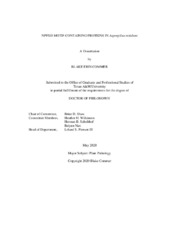| dc.description.abstract | Filamentous fungi grow by producing tubular, thread-like structures called hyphae. These hyphal cells elongate in a unidirectional, polarized manner, by synthesizing and adding new cell wall and membrane exclusively at the apex. Until recently, the model of hyphal growth had been based solely on exocytosis through the Spitzenkörper (SPK), an organized body of secretory vesicles found only in growing fungal hyphae. However, it is now generally presumed that endocytosis is also required, and that a mechanism called apical recycling maintains a balance between the coupled processes of endocytosis and exocytosis. This equilibrium requires both the SPK and a sub-apical collar, which is enriched for endocytosis and originates approximately 1-5 µm distal to the SPK. As new membrane is added and cell wall is synthesized at the apex of each hypha, cargo is also internalized in the sub-apical collar. Here, a bioinformatics approach was utilized to methodically identify 39 Aspergillus nidulans proteins predicted to contain an NPFxD peptide motif, which is a necessary endocytic signal sequence in yeast. I hypothesized that some of these NPFxD motif-containing proteins in A. nidulans would localize to at least one of three apical regions where cargoes are typically observed (the SPK, the sub-apical collar, and the apical crescent). Those with apical localizations are also likely to be associated with the establishment or maintenance of polarized growth, and could even be cargo for endocytosis. In order to test this hypothesis, the expression and localization of motif-containing proteins in A. nidulans was evaluated by endogenously inserting GFP or mCherry and imaging during polarized growth.
The localization patterns of confirmed GFP proteins studied thus far supported the hypothesis that this motif is likely to mark proteins for localization to one or more of the three predicted regions near the growing fronts of hyphae. When apical localization was observed, a gene deletion strain was then constructed to further investigate the function of each protein. Mutants from initial deletion experiments demonstrated an inability to maintain polarization and displayed atypical development in various cell types, which also suggests that the genes in question could be involved in membrane turnover. | en |


